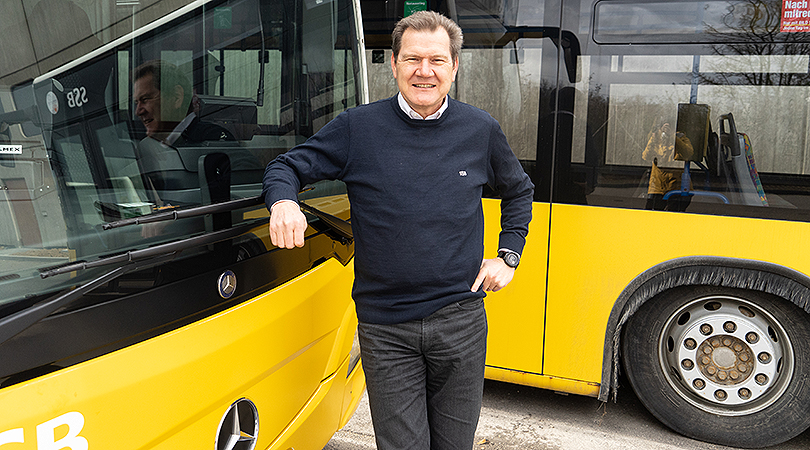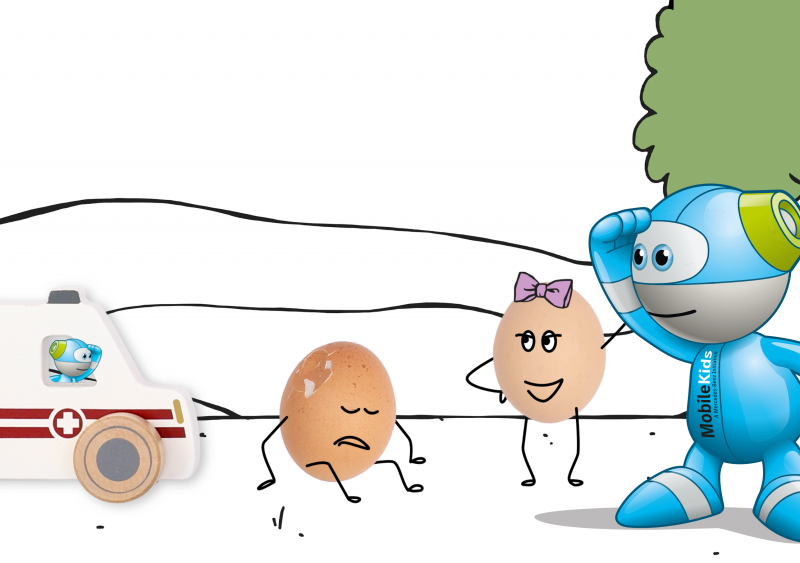The bus stands for safety. Because with it there are few accidents. Passengers sit elevated and speeds are low. To further increase the safety of children on their way to school, correct behaviour on the bus and at bus stops is important. Bus driver trainer Markus Ludwig Modlmeir from Stuttgarter Straßenbahnen AG explains how it works.
What tips do you give your bus drivers when they transport children?
In addition to the legally required basic and advanced training, our bus drivers receive further in-house instruction. We sensitise drivers to school children, who often have a strong urge to move after school and are particularly restless. Both at the bus stops and on the bus. The high noise level also takes some getting used to. Research shows that the noise level on the school bus is equivalent to that of a jet plane taking off. We train the drivers to be particularly considerate and prudent so that they can react in time even when there is a loud bunch of little rascals.
What are typical challenges for school bus drivers?
Children's behaviour is not easy to predict, so as a driver you have to stay focused and have good nerves. When waiting at the bus stop, the children often only notice at a late stage that the bus is already approaching. The rear engine is heard at a late stage and the students are mostly distracted. If the bus driver notices that he or she is not being noticed, he or she should slow down further and even stop with the doors closed until all the children have stepped back.
What should children generally pay attention to on the school bus ride?
The bus is a very safe vehicle as long as you follow the rules. For example, keeping your distance when the bus is approaching is very important. But there are many more rules, such as hold on during the journey, don't fool around or do any gymnastics, or don't put your hands in the closing doors. All in all, students should not underestimate the large vehicle, then everything will go well.
What information must parents and teachers who accompany or supervise children have?
Children should keep at least 50 centimetres away from the approaching bus, not run with the doors and get on quickly after it has stopped. If the children do not notice the approaching school bus, the driver waits until everyone is ready. Supervisors can help here by having the children stand back. The bus driver should always additionally activate the hazard warning lights when other road users need to be warned. For example, when getting out of the car.

1. When approaching the stop
The bus has an "overhang" at the front, which is the part of the bus in front of the front axle. This overlaps the bus platform by up to 50 centimetres when the school bus approaches the stop. So always keep two large steps away from the kerb and wait for the bus to stop before approaching the door.
2. When the doors close
A safety mechanism helps to ensure that no passenger gets between the closing doors. Then they open again automatically. This technology is very reliable, but even it can fail once in a while. So please do not put your hands or feet in the closing doors.
3. During the drive
If you don't get a seat, hold on tight, no matter how much fun it is to climb and romp in the aisles. Because anyone who falls here falls on hard ground. Many metal parts and bars pose a risk of injury. And quite apart from this: please do not stand in the front boarding area next to the driver. Here at the front there is little to hold on to and when turning you obscure the driver's view.
4. When getting out
Sometimes cycle paths run parallel to the stop. So, as always, look left and right to see if cyclists, scooters or even passers-by are crossing. Children should leave their mobile phones in their pockets until they are at home. Because even when crossing the road afterwards on the way home, the same applies: remain attentive.







